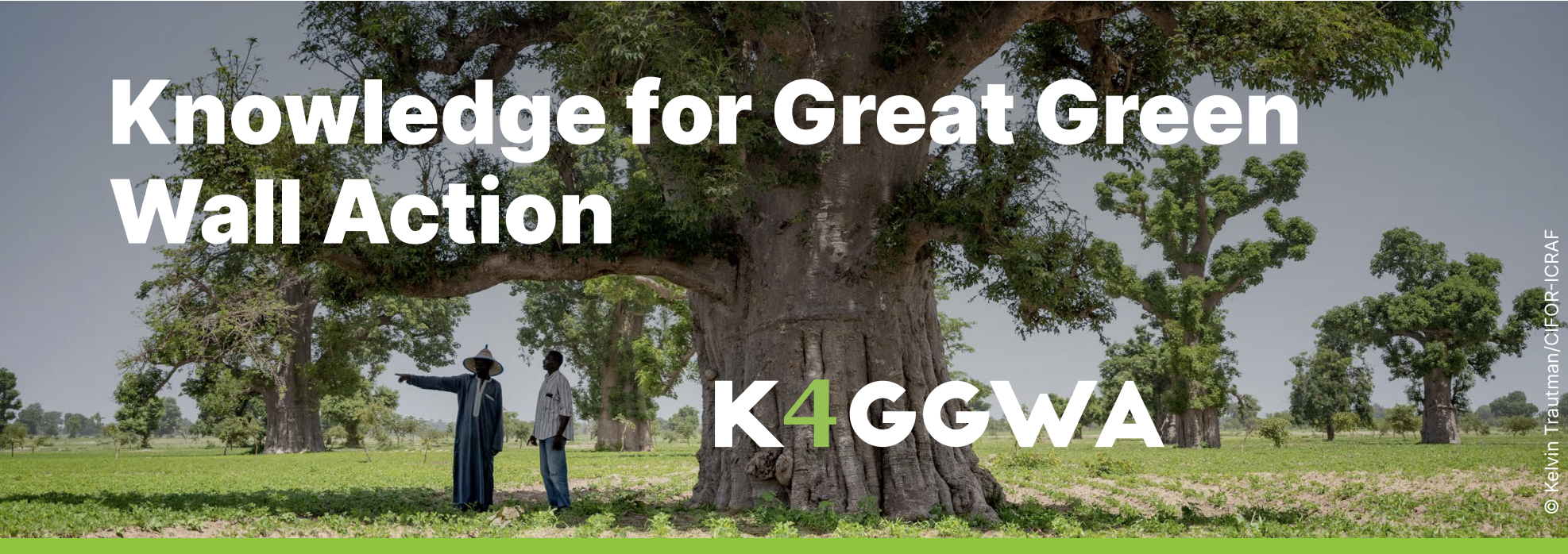K4GGWA - Knowledge Brokerage for the Great Green Wall Initiative

K4GGWA – Knowledge for Great Green Wall Action – is a knowledge-brokering initiative led by CIFOR-ICRAF and the FAO. Borne out of a need to enhance communication and strategy alignment across the Great Green Wall stakeholder network, K4GGWA facilitates knowledge-exchange and is executed across three major axes:
Enhance uptake and effectiveness of sustainable land management, land restoration and integrated landscape management practices - improving regional, national and subnational actors’ capacities to share lessons learned, co-develop and access learning products, and engage stakeholders in practice-based learning trajectories.
Improved land health and vegetation monitoring and intervention targeting - development and application of frameworks/tools for monitoring changes in land health.
Enhanced policy and institutional enabling environment for sustainable management and livelihoods - emphasis on the need to improve GGW institutional, governance, advocacy and awareness dimensions.
Grounded in the SHARED framework, K4GGWA aims to foster inclusive and intersectoral relationship-building across the decision-making cycle, ensuring evidence is made available in an accessible form to a broad range of stakeholders.
What is the Great Green Wall Initiative?
The Great Green Wall Initiative (GGWI) is one of Africa’s most ambitious restoration projects. Conceived in 2005 by the Community of Sahel-Saharan States (CEN-SAD), this visionary effort originally sought to form a political bloc of Sahelian states to support economic development.
By 2007, the initiative had evolved into a bold ecological vision under African Union (AU) leadership: an 8000km-long, 15km-wide living green belt spanning the continent from Senegal in the west to Djibouti in the east, restoring degraded lands, combatting desertification, and enhancing livelihoods across 11 core member states.